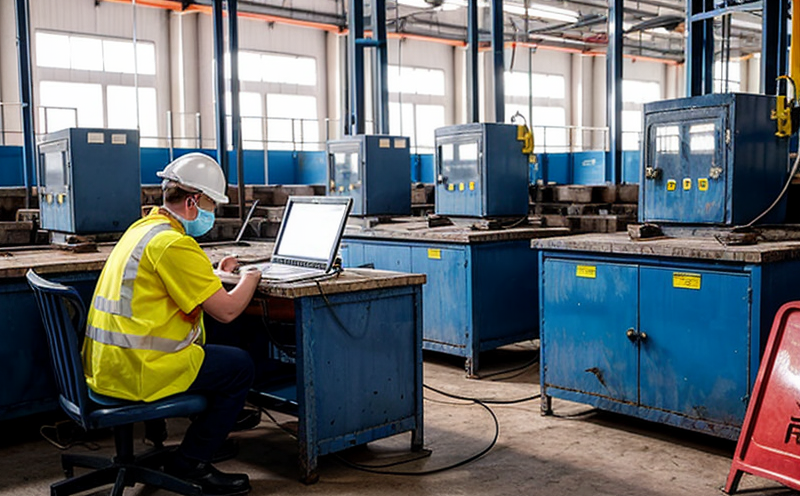ISO 16604 Viral Penetration Resistance Testing
The ISO 16604 standard is designed to evaluate the resistance of materials and barriers to viral penetration. This testing is crucial in ensuring that protective equipment used in high-risk environments, such as industrial manufacturing facilities, offers adequate protection against airborne pathogens like viruses.
In industrial settings, there are numerous opportunities for infectious diseases to spread through aerosols or droplets. To mitigate this risk, employers must ensure the integrity of the barriers and materials used to safeguard workers from exposure. This testing is particularly important in environments where employees work closely together or handle potentially hazardous materials.
The test involves exposing a barrier material to an aerosolized suspension of a surrogate virus (such as MS2 phage) under controlled conditions. The integrity of the barrier is then assessed based on the amount of virus that penetrates through it. This method simulates real-world scenarios where airborne viruses might attempt to pass through protective barriers.
The ISO 16604 standard provides a standardized procedure for conducting this test, ensuring consistency and comparability across different facilities and regions. This is especially important in industries such as pharmaceuticals, food processing, and manufacturing, where strict adherence to safety protocols is paramount.
For industrial manufacturing environments, the testing can help identify potential weaknesses in protective barriers used in areas like clean rooms, fume hoods, or other high-risk zones. By identifying these vulnerabilities early, facilities can implement corrective measures to enhance worker safety and compliance with regulatory requirements.
The test results are typically reported as a percentage of penetration, providing a clear indication of the material's effectiveness against viral penetration. This information is invaluable for quality managers and R&D engineers who need to make informed decisions about equipment selection and process improvements.
Applied Standards
The ISO 16604 standard is widely recognized and applied in various industries. It provides a rigorous framework for evaluating the resistance of materials to viral penetration, which is essential for ensuring worker safety in high-risk environments.
- ISO 16604: This standard outlines the procedure for testing the resistance of materials and barriers to viral penetration. It specifies the test method using an aerosolized surrogate virus to simulate real-world conditions.
The standard is particularly relevant in industries where workers are exposed to airborne pathogens, such as healthcare, pharmaceuticals, food processing, and manufacturing. By adhering to this standard, facilities can ensure that their protective barriers meet the highest safety standards.
Industry Applications
In industrial manufacturing environments, ISO 16604 testing is critical for ensuring worker safety and compliance with regulatory requirements. This testing helps identify potential weaknesses in protective barriers used in areas such as clean rooms, fume hoods, or other high-risk zones.
For quality managers and R&D engineers, the test results provide valuable insights into the effectiveness of materials and barriers used to protect workers from airborne pathogens. By understanding these vulnerabilities early on, facilities can implement corrective measures to enhance safety and compliance with regulatory requirements.
The testing process involves exposing a barrier material to an aerosolized suspension of a surrogate virus (such as MS2 phage) under controlled conditions. The integrity of the barrier is then assessed based on the amount of virus that penetrates through it. This method simulates real-world scenarios where airborne viruses might attempt to pass through protective barriers.
The results are typically reported as a percentage of penetration, providing a clear indication of the material's effectiveness against viral penetration. This information is invaluable for quality managers and R&D engineers who need to make informed decisions about equipment selection and process improvements.
International Acceptance and Recognition
- Aerosolization Techniques: ISO 16604 specifies various aerosolization techniques, including nebulizers, spray chambers, and other methods to ensure consistent and accurate testing.
- Surrogate Viruses: The use of surrogate viruses like MS2 phage is standardized across different regions. This ensures that the results are comparable and reliable.
- Controlled Environments: Testing is conducted in controlled environments to minimize variables and ensure consistent results.
The ISO 16604 standard has been adopted by numerous countries around the world, making it a globally recognized benchmark for evaluating material resistance to viral penetration. This widespread acceptance ensures that facilities can conduct standardized testing regardless of their location or regulatory environment.
By adhering to this international standard, industrial manufacturing and processing facilities can ensure consistent quality and safety across different regions. The use of surrogate viruses like MS2 phage has been recognized by organizations such as the World Health Organization (WHO) and Centers for Disease Control and Prevention (CDC), further validating its reliability and applicability.





